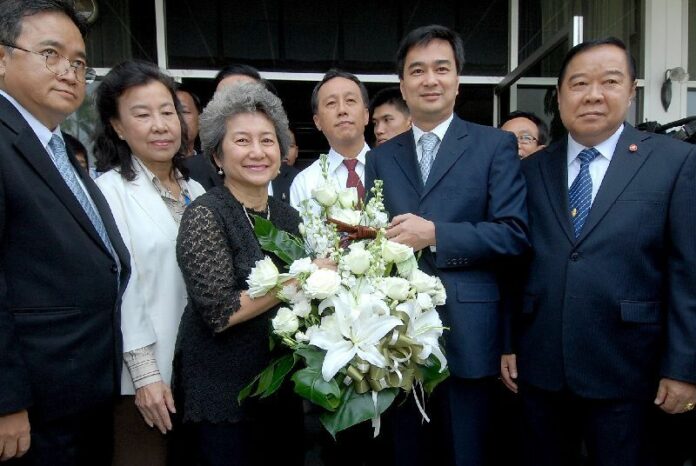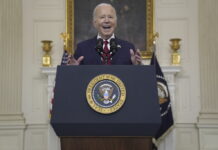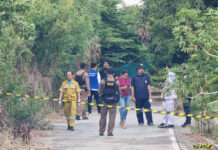
BANGKOK – Thailand′s top human rights commission has been blasted by a number of activists and academics for its report on the 2010 political violence which, the critics say, shifts most of the blames on the side of the protesters rather than the authorities.
Now recognised as the Kingdom′s worst political violence in decades, the events in 2010 started in mid-March when Redshirts protesters rallied to demand then-Prime Minister Abhisit Vejjajiva dissolve the Parliament and resign, charging that Mr. Abhisit did not come to power via an election which counts as an undemocratic procedure.
The protests later escalated as the Redshirts occupied the financial district of the capital city. A military operation was launched to dislodge them on 10 April, but ultimately failed. In the following weeks Bangkok saw sporadic – sometimes deadly – clashes that pitched the Redshirts against the security forces and counter-protesters.
In May 2010, Mr. Abhisit, as head of the Centre for Resolution of Emergency Situation (CRES), authorised a full-scale military assault on the protesters? encampments. After days of intense clashes and more bloodshed, the Redshirts leaders called off the protests and surrendered to police on 19 May 2010. Arson attacks on private and state properties followed throughout the day.
More than 90 people were killed during the violence in April-May 2010. The fatalities include the protesters, soldiers, rescue workers, foreign journalists, and even some onlookers.
Much has been debated and studied about the 2010 crackdown, and yesterday the National Human Rights Committee (NHRC) became the latest to offer its perspective on the contentious issue by releasing a report analysing the events from 12 March – 19 May 2010 in order to "conclude a lesson" and serve as a guideline for the government.
The report, around 90 pages long, can be summed up in 2 points: that the security forces did commit several inappropriate actions – such as dropping teargas from the helicopters onto the crowd below and censoring a number of websites – but the bigger issue is that it was the Redshirts who "violated human rights" by engaging in unlawful protests and provoking the authorities.
The Redshirts under the leadership of the National United Front for Democracy Against Dictatorship (UDD), the report said, violated the laws by organising a protest at Ratchaprasong Intersection, the heart of Bangkok′s financial district. The move equals to provoking violence, according to NHRC.
Therefore, the NHRC said, it is entirely lawful that Mr. Abhisit formed up the CRES and declared emergency laws. The decision by the CRES to censor the UDD? cable TV channel is also justified by the report as a necessary way to block "inflammatory" speeches of the Redshirts.
The casualties during the crackdowns in April and May 2010 were results of clashes between the security forces and shadowy armed militants allegedly allied to the protesters, according the report. Meanwhile, the arson attacks on 19 May 2010 were seen by the report as a tactic of the UDD to cause widespread disruption
Even the deaths of 6 civilians at Wat Pathumwanararm Temple, declared as ′safe zone? for fleeing protesters by the authorities, were described as a consequence of alleged gunfights between the militants and the soldiers near the temple – a clear contradiction to the court inquest which deemed last week that no armed militants were seen in the area, and that the deaths were caused solely by the military personnel.
Critics said the report is biased against the protesters, because it appears to explain the 2010 crackdown entirely as a confrontation between 2 armed groups and ignores many well-documented scenarios in which the military indiscriminately fired at unarmed civilians.
The report is also accused of devoting overwhelming details on the mistakes of the Redshirts instead of the authorities. For example, the NHCR report took pain to mention a single episode in which Redshirts guards stormed into Chulalongkorn Hospital to look for soldiers said to be hiding there. The NHCR ruled that such action by the protesters clearly violated human rights.
Mr. Sombat Boon-ngarmanong, coordinator of a progressive Redshirts faction called ?Red Sunday?, said when he read the NHCR report "I felt like I was reading a report written by CRES itself", as many details appear to reinforce the narrative of the authorities at the time.
For example, he said, the report hardly mentioned the deployment of military snipers in urban areas who are said to have caused many injuries and deaths. Apparently, according to Mr. Sombat, the committee seemed to adopt the same idea as Mr. Suthep Thuegsuban, then Deputy Prime Minister, that there were no snipers in the crackdown at all.
Furthermore, Mr. Sombat said, the report curiously criticised the Redshirts for bringing women and children to the protests, saying it violated human rights – the same charge CRES employed against the Redshirts.
"Other protests around the world included presence of women and children as well. Would the NHRC also accuse them all of using human shields? And by the way, if bringing women and children to protests is violation of human rights, what about the military who shot at these women and children?" Mr. Sombat said.
Mr. Sombat told our correspondent it is agreeable to say that the UDD overstepping the boundaries of lawful assembly, but it is totally unacceptable to say that the government′s reaction to the protest was based on ‘necessity and went in accordance with the constitution’ as the report suggested.
In his opinion, Mr. Sombat believed that the committee did not try to indicate any mistakes made by the government official and seemed reluctant to say that the government is violating human rights.
“I would like to call it the ‘Abhisit report′, rather than the NHRC report” said Mr. Sombat, “I would also like to ask the committee to resign, so they would not be a burden on our next generation”.
Mr. Panad Tassaneeyanon, a legal expert and a former dean of the Faculty of Law at Thammasat University, voiced his concern that the authorities at the time might use this report as an excuse to avoid any legal prosecution against them for their roles in the crackdown by insisting that they were acting within lawful conducts.
In a telephone interview, Mr. Panad said it is unacceptable that the report only encouraged financial compensation to the victims and their families but did not insist on the necessity of criminal prosecution against the security forces in order to hold them accountable for their atrocities. "It will lead to the same culture of impunity in Thailand," Mr. Panad said of the NHRC report.
Meanwhile, Mr. Sirote Klampaiboon, a lecturer in political science at Thammasart University, told our correspondent after having read the report he had the impression that NHRC somehow saw actions of the protesters like storming into hospital and blocking traffic more condemnable than the use of live ammunition and excessive violence on unarmed civilians by the security forces.
"The protesters should be punished by laws, not by military crackdown with live ammunition," Mr. Sirote said.
Other critics questioned the NHRC report′s credibility, as the committee reportedly invited 1,036 witnesses from the incident for information, but only 184 turned up for the interviews, and most of them were reluctant to mention any specific details about the military crackdown.
In her defense, Ms. Amara Pongsapitchaya, the chairwoman of the NHRC, told Khaosod that she did state very clearly in her report that the Abhisit administration did violate human rights too by announcing the emergency laws which granted the government a sweeping power in 2010.
However, she insisted that the invocation of such powers were "acceptable" because the former government was observing the situation closely and only used the laws when it was clear that the protests were about to turn violent.
Asked why she criticised Prime Minister Yingluck Shinawatra′s invocation of Internal Security Act to handle the anti-government protests last week, Ms. Amara said the government pre-emptively resorted to the laws which is unnecessary.
Later last night, Ms. Amara went on a TV debate with Ms. Kwanrawee Wang-udom, a representative of the nonpartisan People′s Information Center For April-May 2010 Crackdown (PIC), hosted by Kom Chad Luek channel. Questioned by Ms. Kwanrawee, who did extensive research on the crackdown, and the debate host, Ms. Amara offered very little defence of her work.
She appeared incoherent and even distracted throughout the interview, especially when pressed to explain about contentious issues such as the armed militants and deaths in Wat Pathumwanararm. Many of her replies were simply "I have not looked into that", or "I am not sure about that".
Once, Ms. Amara even claimed that she did not know who fired the first shot in the crackdown. While Ms. Kwanrawee insisted that evidences and witnesses clearly stated the military fired their weapons without any warning on 10 April 2010, Ms. Amara said she was not sure about the details. However, she said she had talked to members of security forces who told her it was impossible that they fired the first shots.
Ms. Kwanrawee eventually challenged Ms. Amara later, "You work for the NHRC. You are supposed to gather information independently. You can?t simply ask for information from the authorities".
For comments, or corrections to this article please contact: [email protected]
You can also find Khaosod English on Twitter and Facebook
http://twitter.com/KhaosodEnglish
http://www.facebook.com/KhaosodEnglish















































